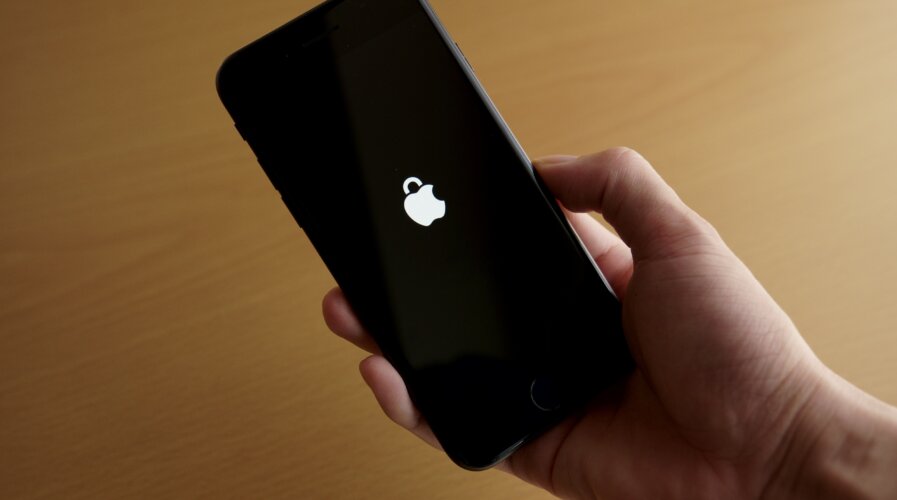
Stolen Device Protection aims to protect users when thieves or even cybercriminals know of their private passwords for their Apple ID. (Image by Shutterstock).
Apple introduces new iPhone security mode
- Apple has introduced a new stolen device protection feature for the iPhone in the iOS 17.3 beta.
- Stolen Device Protection aims to protect users when thieves or even cybercriminals know of the private passwords for their Apple ID.
- There will also be a geographical element to the protection – if you go somewhere unusual, the phone will request facial recognition befor letting you access sensitive data.
While mobile phone security continues to improve, there is still one big problem – what happens when your phone gets stolen? Over the years, mobile phones have added new features that help users detect or lock their phone should they lose it or have it stolen.
But it seems that’s still not sufficient protection. Take the iPhone for example. Apple boasts that the iPhone is known for security, with the iOS often being hard to compromise. Yet, the iPhone is still one of the most stolen devices in the world, reflecting the value it has in the market.
In fact, data provided by the London Metropolitan Police revealed that in 2022, a staggering 90,864 mobile devices were reported stolen in London alone. That’s about 250 phones being stolen daily in the city. In another report by Deloitte, accessing owners’ email addresses, contacts, pictures and other features on stolen smartphones was easy, despite the numerous security features on mobile devices today.
Reports also showed that stolen iPhones could pose a bigger threat, as the thieves could just reset a victim’s Apple ID password, turn off Find My iPhone, view passwords stored in iCloud Keychain for banking and email accounts, and more. Put simply, the thieves could steal an individual’s entire digital life just by getting access to their smartphone.
And here’s where it gets even scarier. Given that almost all our data is stored in our mobile devices today, be it personal or work, thieves could use this data to create more havoc. For example, once a thief is able to unlock a stolen iPhone, they could use it to request funds, make purchases or even access personal images to deepfake on the device.
Apple in particular has created solutions to deal with this. These included the Find My Phone and Lost My Phone features. Certain apps also have kill switches that can block access to them if a device is compromised. However, a report by The Wall Street Journal in 2023 showed how thieves can use Apple’s optional recovery key security option to permanently lock out iPhone users from their Apple ID account.

Apple has introduced a new stolen device protection feature for the iPhone in the iOS 17.3 beta.
Apple improves iPhone security features
Given the increasing concerns over thieves accessing stolen iPhones and changing user Apple ID passwords, Apple will be introducing a new security mode for iPhones. The feature, Stolen Device Protection aims to protect users when thieves or even cybercriminals know the private passwords for their Apple ID.
According to a report by CNBC, the Stolen Device Protection feature will create a second layer of security, making it harder for thieves to use the passcode to create havoc with a device that has been stolen or compromised.
The report explained that if the iPhone is at a location that is not usually associated with its owner, and Stolen Device Protection is turned on, the device will require Apple’s FaceID facial recognition in addition to a passcode for users to perform sensitive actions, such as viewing stored passwords or wiping the phone. It also adds a delay when changing the user’s Apple ID password.
Apple is enabling multi-factor authentication on its devices. As such, even though a phone is stolen, the thief will still not be able to unlock it. The victim could then access their Find My Device to locate it or simply just lock it up.
“As threats to user devices continue to evolve, we develop new protections for our users and their data. iPhone data encryption has long led the industry, and a thief can’t access data on a stolen iPhone without knowing the user’s passcode. In the rare cases where a thief can observe the user entering the passcode and then steal the device, Stolen Device Protection adds a sophisticated new layer of protection,” an Apple spokesperson explained.
With Stolen Device Protection, Apple will essentially prompt every iPhone user to input a four-digit or six-digit passcode when the device is set up. Before the new function was added, Apple’s privacy and stolen device protections, including its FaceID facial recognition tool, were tied to that passcode, allowing anyone with a stolen device and passcode to take full control of the phone.
The new feature will be available for those who have the latest developer beta of iOS, iOS 17.3. The opt-in feature will be shipped to other iPhone users in the coming weeks when iOS 17.3 is launched to the public.

Thieves may soon find it harder to get access to stolen iPhones. (Image generated by AI).
Other ways to secure your mobile devices
While Apple has unveiled its plans to secure iPhones, other phone manufacturers also have their own mechanisms and features to secure and lock devices should they go missing or get stolen. However, users still need to be vigilant when using their devices and be mindful of the passwords they create for their devices.
Here are some ways to secure mobile devices from cyberattacks, theft, or loss:
- Use strong passwords, biometrics, or two-factor authentication to lock the device and prevent unauthorized access.
- Encrypt devices and data to make them unreadable to anyone who does not have the decryption key.
- Install a reputable anti-virus software and keep it updated to scan and remove any malware or viruses from your device.
- Avoid using public or free wifi networks that are not encrypted or secured, as they can expose devices to hackers and eavesdroppers. Use a VPN (virtual private network) to encrypt your internet traffic and hide your online activity.
- Download apps only from trusted sources, such as the official app stores, and check the permissions and reviews before installing them. Avoid clicking on suspicious links or attachments that may contain malware or phishing scams.
- Backup data regularly to a cloud service or an external device, such as a USB drive, in case the device is lost, stolen, or damaged. Users can also use a remote wipe feature to erase their data from a lost or stolen device.
- Update the device’s operating system and apps to the latest version to fix any security vulnerabilities and bugs that may compromise your device.
- Be careful about what is shared on social media or other online platforms, as hackers may use personal information to guess passwords, answer security questions, or target victims with phishing or social engineering attacks.
These are some of the basic steps you can take to secure their mobile devices and protect your privacy and data.
READ MORE
- Safer Automation: How Sophic and Firmus Succeeded in Malaysia with MDEC’s Support
- Privilege granted, not gained: Intelligent authorization for enhanced infrastructure productivity
- Low-Code produces the Proof-of-Possibilities
- New Wearables Enable Staff to Work Faster and Safer
- Experts weigh in on Oracle’s departure from adland




